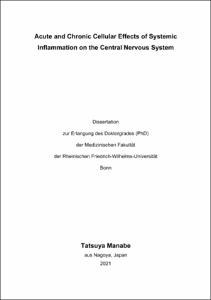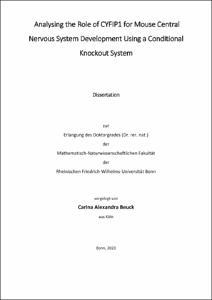Nuclear Physics in a finite volume: Investigation of two-particle and α-cluster systems

Nuclear Physics in a finite volume: Investigation of two-particle and α-cluster systems

| dc.contributor.advisor | Meißner, Ulf-G. | |
| dc.contributor.author | Stellin, Gianluca | |
| dc.date.accessioned | 2021-01-25T11:07:11Z | |
| dc.date.available | 2021-01-25T11:07:11Z | |
| dc.date.issued | 25.01.2021 | |
| dc.identifier.uri | https://hdl.handle.net/20.500.11811/8892 | |
| dc.description.abstract | We investigate both analytically and numerically some artifacts introduced by the lattice environment in two-body charged fermion and antifermion systems and in α-conjugate nuclei. The finite (hyper)cubic lattice as a surrogate of the continuum and infinite-volume configuration space represents the context in which the properties of compounds of quarks or nucleons are computationally investigated in nuclear and subnuclear physics. The modified topology of the space in which many-body wave functions and fields find their support produces sizable changes in the average values of physical observables and namely energy eigenvalues, that can be controlled by reducing the lattice spacing and increasing the number of mesh points.
The first problem that we address concerns the finite-volume energy corrections for two-fermion bound and scattering states in a cubic lattice in the presence of strong and electromagnetic interactions. After reviewing the formalism of pionless EFT and non-relativistic QED, we derive the amplitude and the leading order scattering parameters for the two-body elastic scattering process in presence of a strong interaction that couples the fermion fields to zero angular momentum. Then, the latter is replaced by a P-wave strong interaction, and new scattering amplitudes are obtained, accounting again for the Coulomb photon exchanges to all orders in the fine-structure constant. Motivated by the research on particle-antiparticle bound states, we extend the results to fermions of identical mass and opposite charge. Second, we transpose the system onto a cubic finite-volume with periodic boundary conditions and we calculate the finite volume corrections to the energy of the lowest bound and unbound T1 eigenstates, which are the finite-volume counterpart of the states transforming as the ℓ = 1 irreducible representation (irrep) of the rotation group. The procedure for the derivation of the mass shifts for the lowest A1 states, i.e. transforming as the ℓ = 0 irrep of SO(3), is also reviewed. In particular, power law corrections proportional to the fine structure constant and resembling the recent results for S-wave states are found. Higher order contributions in α are neglected, since the gapped nature of the momentum operator in the finite-volume environnement allows for a perturbative treatment of the QED interactions. The second main thread of this thesis covers the breaking of rotational symmetry in the low-energy spectrum of the three lightest A = 4n self-conjugate nuclei on the lattice. In this part, that may be regarded as the numerical continuation of the previous one, a macroscopic α-cluster model is used for investigating the general problems associated with the representation of the nuclear many-body problem on a cubic lattice. In the context of a descent from the three-dimensional rotation group to the cubic group symmetry, the role of the squared total angular momentum operator in the classification of the lattice eigenstates in terms of SO(3) irreps is discussed. In particular, the behaviour of the average values of the latter operator, the Hamiltonian and the inter-particle distance as a function of lattice spacing and size is studied by considering the 01+, 21+, 42+ and 61+ states of 8Be, the 01+, 21+ and 31- states of 12C and the 01+, 21±, 31± and 41± states of 16O. Among these, special attention is reserved to the ground states, from which the binding energies, BE(N,Z), of the three nuclei depend. It is found that BE(6,6) is faithfully reproduced in the infinite volume limit by construction, whereas BE(4,4) and BE(8,8) display shifts of 1.2 and 10.9 MeV, respectively. As a consequence, the concluding part is dedicated to the fitting of the strength parameter, V3, of the three-body potential of the adopted α-cluster model to the 4α and the α+12C thresholds of 16O. For the purpose, the variational calculation developed on three-body relative harmonic oscillator states is adopted and the relevant matrix elements are expressed in terms of standard Moshinsky brackets. The extracted values of V3 at increasing dimensions of the truncated basis are exploited for the extraction of the estimation of the expectation value of the parameter. | en |
| dc.language.iso | eng | |
| dc.rights | In Copyright | |
| dc.rights.uri | http://rightsstatements.org/vocab/InC/1.0/ | |
| dc.subject | Gruppentheorie | |
| dc.subject | Gittereichtheorie | |
| dc.subject | Elektromagnetische Prozesse und Eigenschaften | |
| dc.subject | Eigenschaften von Kernen und Energieniveaus | |
| dc.subject | Zwei-Nukleon-Systeme | |
| dc.subject | Kernstruktur-Modelle und Methoden | |
| dc.subject | Cluster-Modelle | |
| dc.subject | Wenigkörper-Systeme | |
| dc.subject | Variationsmethode | |
| dc.subject | Group Theory | |
| dc.subject | Lattice Gauge Theory | |
| dc.subject | Electromagnetic Processes and Properties | |
| dc.subject | Properties of nuclei and nuclear energy levels | |
| dc.subject | Two-Nucleon System | |
| dc.subject | Nuclear-structure models and methods | |
| dc.subject | Cluster models | |
| dc.subject | Few-Body Systems | |
| dc.subject | Variational techniques | |
| dc.subject.ddc | 530 Physik | |
| dc.title | Nuclear Physics in a finite volume: Investigation of two-particle and α-cluster systems | |
| dc.type | Dissertation oder Habilitation | |
| dc.publisher.name | Universitäts- und Landesbibliothek Bonn | |
| dc.publisher.location | Bonn | |
| dc.rights.accessRights | openAccess | |
| dc.identifier.urn | https://nbn-resolving.org/urn:nbn:de:hbz:5-60996 | |
| ulbbn.pubtype | Erstveröffentlichung | |
| ulbbnediss.affiliation.name | Rheinische Friedrich-Wilhelms-Universität Bonn | |
| ulbbnediss.affiliation.location | Bonn | |
| ulbbnediss.thesis.level | Dissertation | |
| ulbbnediss.dissID | 6099 | |
| ulbbnediss.date.accepted | 17.12.2020 | |
| ulbbnediss.institute | Mathematisch-Naturwissenschaftliche Fakultät : Fachgruppe Physik/Astronomie / Helmholtz-Institut für Strahlen- und Kernphysik (HISKP) | |
| ulbbnediss.fakultaet | Mathematisch-Naturwissenschaftliche Fakultät | |
| dc.contributor.coReferee | Luu, Thomas |
Files in this item
This item appears in the following Collection(s)
-
E-Dissertationen (4379)







